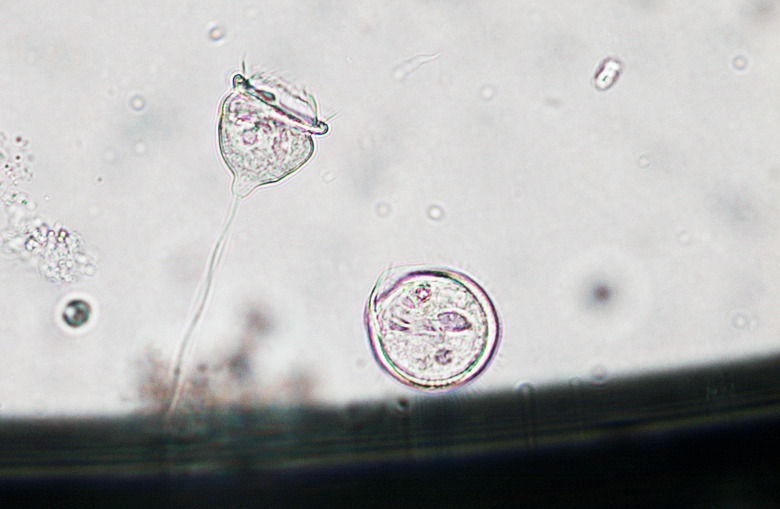How To Make A Model Of A Plant Cell In A Plastic Bag
Biology students learn that the cell is the basic unit of all life. All living organisms, including plants, are composed of trillions of cells, each containing its own set of organelles responsible for a host of functions that ultimately enable the larger organism to function. You can enhance your understanding of a plant cell's makeup by constructing an edible plant cell model in a plastic bag.
Step 1
Line the inside of a rectangular plastic storage container with a plastic bag. The plastic bag will serve as the plant cell's cell membrane and will take on the rectangular shape of the container when you have completed the project.
Step 2
Mix a light-colored gelatin mix in a large bowl with warm water. Use slightly less water than the instructions on the box call for to make a stiffer, more resilient gelatin that will be able to hold the cell's organelles in place. Lemon Jell-O is recommended since it is the most transparent variation. The gelatin will serve as the plant cell's cytoplasm.
Step 3
Fill the plastic bag with the gelatin mixture until it reaches about half an inch from the rim of the container. Do not fill the container to the rim because you will need room to add the organelles later.
Step 4
Seal the plastic bag with a twist tie and place the container, bag and gelatin mix in the refrigerator for about one hour until the gelatin is almost set but not yet fully hardened.
Step 5
Use a labeled diagram of a plant cell as your guide as you add the ingredients that will represent the organelles. Cut a plum in half so its pit is visible, and insert the plum into the center of the gelatin. The plum pit will serve as the nucleolus and the plum's skin will be the nuclear membrane. Intersperse several raisins for the mitochondria and several red M&Ms for the lysosomes. Use three green grapes for the chloroplasts, a piece of ribbon candy or a Fruit Roll-Up as the Golgi body, candy sprinkles for the ribosomes, an orange gumdrop for the centrosome, pink gumdrops for the amyloplasts, regular gummy worms for the smooth ER, sour gummy worms with rough powdered sugar for the rough ER, and a large jawbreaker or gumball for a vacuole.
Step 6
Reseal the bag and place it back into the refrigerator until the gelatin is completely hardened.
Step 7
Remove the plastic bag from the container. If the cell does not take on the rectangular form of the container, place the bag back into the container and refrigerate it until the gelatin is fully set.
Step 8
Write the name of each organelle on a small strip of paper and tape each strip to a toothpick. Insert the toothpick into the gelatin next to the corresponding organelle to label the components of your plant cell model.
Things Needed
- Plastic bag
- Rectangular plastic storage container
- Jell-O or other gelatin mix
- Plum
- Raisins
- M&Ms
- Green grapes
- Ribbon Candy or Fruit Roll-Ups
- Candy sprinkles
- Gumdrops
- Regular gummy worms
- Sour gummy worms
- Large jawbreaker or gumball
- Paper strips
- Toothpicks
- Tape
TL;DR (Too Long; Didn't Read)
Your model cell will be completely edible, so you can eat it after you have finished presenting it to your teacher.
Cite This Article
MLA
Westin, Dawn. "How To Make A Model Of A Plant Cell In A Plastic Bag" sciencing.com, https://www.sciencing.com/make-model-plant-cell-plastic-bag-12094635/. 24 April 2017.
APA
Westin, Dawn. (2017, April 24). How To Make A Model Of A Plant Cell In A Plastic Bag. sciencing.com. Retrieved from https://www.sciencing.com/make-model-plant-cell-plastic-bag-12094635/
Chicago
Westin, Dawn. How To Make A Model Of A Plant Cell In A Plastic Bag last modified March 24, 2022. https://www.sciencing.com/make-model-plant-cell-plastic-bag-12094635/
